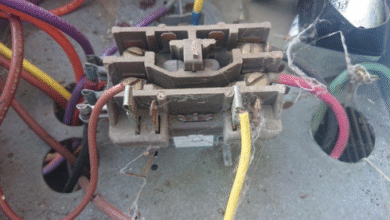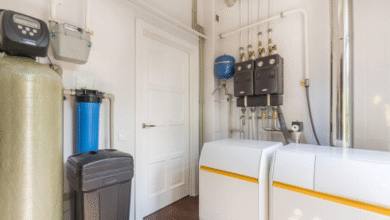Finding Balance: Do You Really Need to Remove Fluoride from Your Drinking Water?

There’s something about water that makes you think it should be simple. Crystal clear, tasteless, life-giving. But then you scratch the surface and suddenly you’re knee-deep in debates about pH levels, chlorine traces, and that one little word that sparks a surprising amount of argument—fluoride. Some folks swear it’s essential for healthy teeth, while others see it as an unwelcome intruder in their glass.
So, where does that leave the average household? Do you shrug it off, or do you start hunting down ways to strip it out of your daily supply? The truth, as usual, sits somewhere in the messy middle.
A Quick Dive into Fluoride’s Reputation
If you grew up in a community where fluoride was added to the tap water, chances are your dentist probably gave it two thumbs up. Fluoride helps harden enamel, reduces cavities, and has been considered a kind of silent superhero for public dental health for decades.
But here’s the twist—too much fluoride isn’t great either. Long-term exposure to high levels has been linked to dental fluorosis (those faint white streaks on teeth) and in rare cases, bone-related issues. That’s where concerns creep in. Not all water sources carry the same levels, and some regions naturally have way more than what’s considered safe.
This is where a fluoride removal system comes into the picture. For families who want more control over what flows from their faucet, it’s not just about taste or clarity—it’s about peace of mind.
Why Households Are Reconsidering Their Options
In recent years, there’s been a subtle shift in how people think about their drinking water. It’s not paranoia so much as a desire for transparency. With so many headlines about contaminants—lead in pipes, microplastics, PFAS—it makes sense that folks are paying closer attention to something as fundamental as water.
Parents in particular tend to dig deeper. They’re not always convinced that “acceptable limits” on chemical additives are the same as “healthy for my kid.” A growing number are choosing to install a fluoride water filter for home setups, not because they’re alarmists, but because they’d rather decide for themselves what goes into their family’s glasses and coffee mugs.
And honestly, that mindset is hard to argue with. We don’t accept mystery ingredients in food anymore, so why should water be different?
The Tools in the Toolbox
When it comes to filtering out fluoride, not all devices are created equal. Regular carbon filters—the kind you find in those sleek pitchers on kitchen counters—don’t actually tackle fluoride. It takes something a bit more specialized.
Reverse osmosis systems are probably the most popular option, using a semi-permeable membrane to push out all sorts of unwanted extras. Activated alumina filters are another, designed specifically for fluoride reduction. Then there are distillation units, which boil water into steam before condensing it back, leaving many contaminants behind.
Each comes with its quirks. Reverse osmosis can waste water in the process. Distillers are slow and not always practical for bigger families. Activated alumina works well but needs maintenance. None are perfect, but they all give homeowners more control than just sticking with whatever flows from the city line.
This growing landscape of water de-fluoridation solutions makes it easier to find something that fits different lifestyles—whether you’re a solo apartment dweller, a family of five, or someone who just can’t stand the thought of “extra” chemicals in their morning tea.
The Personal Factor
Here’s the thing though: deciding whether to remove fluoride isn’t purely a technical decision—it’s also personal. Some people feel strongly that keeping natural minerals (fluoride included) in water is a good thing. Others would rather strip everything out and re-mineralize it themselves for consistency.
There’s no universal right answer. It depends on your health priorities, your trust in local water management, and even your budget. What works for your neighbor may not be what you want for your household.
I once visited a friend who proudly showed off their multi-stage system tucked neatly under the sink. They swore the coffee tasted better and even claimed their houseplants perked up. Another friend, a dentist, rolled his eyes at the thought of filtering out fluoride, calling it “throwing the baby out with the bathwater.” And honestly? They’re both right in their own way.
Weighing the Trade-Offs
At the end of the day, water choices are about balance. You weigh the benefits against the risks, the convenience against the cost. Installing a system isn’t always cheap, and it does take some upkeep. But for many, that’s a small price for the reassurance that they’re making the decision themselves, not leaving it up to city policy or natural geology.
So if you’re on the fence, maybe start with research. Look up your local water quality report. See where fluoride levels stand. If it’s within recommended limits and you’re comfortable with that, maybe you don’t need to change a thing. If it makes you uneasy, then exploring filters might be worth the investment.
Closing Thoughts
Water is personal. It’s in every meal, every shower, every sip you take when you wake up thirsty at 3 a.m. That’s why it makes sense people care so much about what’s in it—or what’s not.
Whether you decide to stick with what you’ve got or install a system that lets you take control, the important part is making a choice that feels right for you. After all, health isn’t one-size-fits-all. Sometimes, it’s about listening to your gut as much as your tap.




